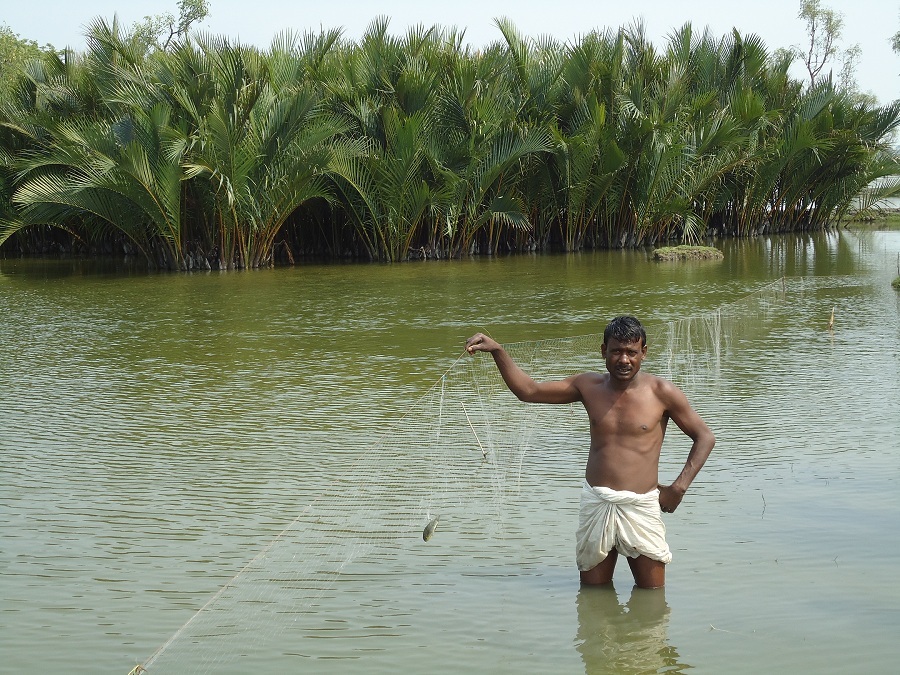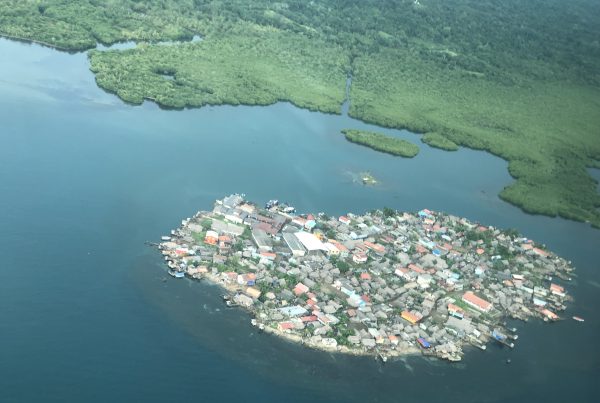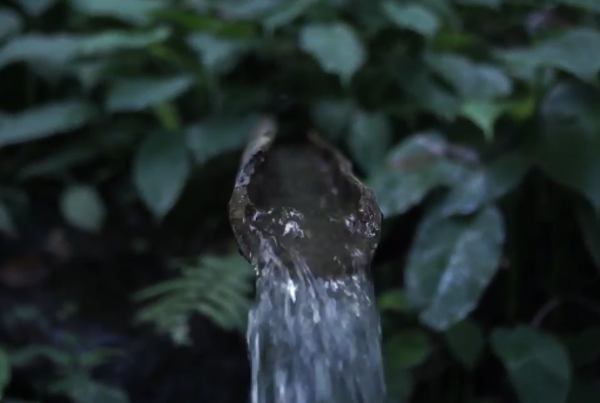The communities around the Sundarbans are continuously struggling to sustain their livelihoods. Most of the community members are entirely dependent on the Sundarbans’ mangrove ecosystem but forest degradation (caused by overwhelming pressure on its resources), recurring cyclones 1, salinity intrusion, floods and other factors are contributing to increased vulnerability of the traditional resource users.
With the support of the NGO Unnayan Onneshan, a local research team and the communities worked together to identify areas of vulnerability of traditional resource users and to map the current and potential threats. Elders and experienced honey collectors, fishermen, and collectors of golpata (Nypa palm fronds) collaborated to point out the areas that are most vulnerable to flooding and other threats. Resource collection areas were grouped into three zones: a green zone where resources are abundant, a blue zone where resources are decreasing, and a red zone where resources have decreased considerably. Factors were also identified relating to the drivers of resource degradation. The research data gathered were used to prepare vulnerability maps to indicate which areas need special conservation attention and which areas can be used for resource collection (and to what extent). These maps are used for advocacy with the forest departments, who often have a different view on the vulnerable areas and therefore implement inappropriate action.
The same research initiative also investigated community-based adaptations and listed their main features, limitations and opportunities. The study documented 47 adaptation practices that respond to livelihood and water scarcity and structural scarcity. The practices enhanced resilience to tropical cyclones, storm surges and salinity intrusion. For example, communities affected by natural disasters and climate change in coastal areas in Khulna, Satkhira and Bagerhat districts have attempted to cultivate mangrove species in swampy lands with brackish water, which are suffering from increased salinity and have become unproductive for food crop production. In their community-based mangrove forestry practices, which combine traditional knowledge and innovation, mangrove species are grown alongside production of fish, ducks and vegetables, leading to reduced pressure on the Sundarbans while also securing livelihoods through the generation of multiple incomes. Following small-scale advocacy programmes at the local level to popularise this agro-silvo-aquaculture model, many Bawalis (traditional woodcutters) have started similar practices in their private or leased land and have been able to improve their livelihood conditions.
Agro-silvo-aquaculture in villages adjoining the Sundarbans. Courtesy Unnayan Onnesha
Author
- Unnayan Onneshan
Ecosystems
- Marine and coastal
Topics
- Food
- Mapping and monitoring
- Knowledge, culture and spirituality
Type
- Short-form
Date
- This case study forms part of LBO-1, originally released in 2016.
References
- Kumar, U., Baten, M. A., Al Masud, A., Osman, K. S. & Rahman, M. M. Cyclone Aila : One Year on Natural Disaster to Human Sufferings. Agriculture (2010). at <http://www.unnayan.org/reports/climate/ailareport_final.pdf>



